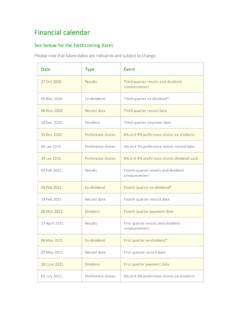Transcription of JP 3-57, Civil-Military Operations, 9 July 2018
1 9 july 2018 Civil-Military OperationsJoint Publication 3-57 i PREFACE 1. Scope This publication provides joint doctrine to plan, conduct, and assess Civil-Military operations. 2. Purpose This publication has been prepared under the direction of the Chairman of the Joint Chiefs of Staff (CJCS). It sets forth joint doctrine to govern the activities and performance of the Armed Forces of the United States in joint operations, and it provides considerations for military interaction with governmental and nongovernmental agencies, multinational forces, and other interorganizational partners. It provides military guidance for the exercise of authority by combatant commanders and other joint force commanders (JFCs), and prescribes joint doctrine for operations and training. It provides military guidance for use by the Armed Forces in preparing and executing their plans and orders. It is not the intent of this publication to restrict the authority of the JFC from organizing the force and executing the mission in a manner the JFC deems most appropriate to ensure unity of effort in the accomplishment of objectives.
2 3. Application a. Joint doctrine established in this publication applies to the Joint Staff, commanders of combatant commands, subordinate unified commands, joint task forces, subordinate components of these commands, the Services, and combat support agencies. b. The guidance in this publication is authoritative; as such, this doctrine will be followed except when, in the judgment of the commander, exceptional circumstances dictate otherwise. If conflicts arise between the contents of this publication and the contents of Service publications, this publication will take precedence unless the CJCS, normally in coordination with the other members of the Joint Chiefs of Staff, has provided more current and specific guidance. Commanders of forces operating as part of a multinational (alliance or coalition) military command should follow multinational doctrine and procedures ratified by the United States.
3 For doctrine and procedures not ratified by the US, commanders should evaluate and follow the multinational command s doctrine and procedures, where applicable and consistent with US law, regulations, and doctrine. For the Chairman of the Joint Chiefs of Staff: KEVIN D. SCOTT Vice Admiral, USN Director, Joint Force Development Preface ii JP 3-57 Intentionally Blank iii SUMMARY OF CHANGES REVISION OF JOINT PUBLICATION 3-57, 11 SEPTEMBER 2013 Deletes Chapter IV, Civil Affairs Forces and Civil Affairs Operations, and moves contents and discussion to, and renames, Appendix A, Service Capabilities in Support of Civil-Military Operations. Adds Civil-Military operations assessment appendix. Adds an appendix on the discussion of civil information management. Clarifies and updates text to ensure consistency with the newly revised Joint Publication (JP) 3-0, Joint Operations, and JP 5-0, Joint Planning.
4 Updates figures and vignettes to reflect best practices. Updates terms and definitions. Summary of Changes iv JP 3-57 Intentionally Blank v TABLE OF CONTENTS EXECUTIVE SUMMARY .. vii CHAPTER I INTRODUCTION General .. I-1 Civil-Military Operations and Levels of Warfare .. I-6 Civil-Military Operations Range of Activities .. I-9 Civil-Military Operations, Civil Affairs Operations, and Unified Action .. I-16 CHAPTER II Civil-Military OPERATIONS FUNCTION AND COMPONENTS Civil-Military Operations Functions ..II-1 Civil-Military Operations Components ..II-2 Organizing for Civil-Military Operations ..II-4 Civil-Military Operations Center ..II-5 Military Government ..II-11 Defense Support of Civil Authorities ..II-13 CHAPTER III PLANNING General .. III-1 Planning Considerations .. III-4 Other Planning Considerations .. III-6 APPENDIX A Service Capabilities in Support of Civil-Military Operations.
5 A-1 B Planning Considerations for Civil Affairs Operations ..B-1 C Civil Information Management ..C-1 D Assessing Civil-Military Operations .. D-1 E Points of Contact .. E-1 F References .. F-1 G Administrative Instructions .. G-1 GLOSSARY Part I Abbreviations, Acronyms, and Initialisms .. GL-1 Part II Terms and Definitions .. GL-6 FIGURE I-1 Notional Operations Across the Conflict Continuum .. I-1 I-2 Possible Change Indicators .. I-8 Table of Contents vi JP 3-57 I-3 Unified Action, Civil-Military Operations, and Civil Affairs Operations .. I-17 I-4 Civil Affairs Functional Areas and Specialties .. I-18 II-1 Civil-Military Operations Components and Functions ..II-3 II- 2 Notional Civil-Military Operations Center ..II-6 II- 3 Operations Center Comparisons ..II-7 II- 4 Joint Civil-Military Operations Task Force Functions ..II-8 II- 5 Notional Joint Civil-Military Operations Task Force Organization.
6 II-9 III-1 The Conflict Continuum .. III-2 III-2 Civil-Military Operations General Planning Considerations .. III-5 III-3 Legal Issues .. III-10 A-A-1 Civil Affairs Joint Responsibilities .. A-A-4 A-C-1 Medical Planning Considerations in Medical Civil-Military Operations .. A-C-4 A-D-1 Army Military Police Disciplines, Technical Capabilities and Tactical Tasks .. A-D-2 A-D-2 Marine Air-Ground Task Force Military Police Capabilities .. A-D-3 B-1 Sample Checklist for Transition Planning ..B-7 C-1 Notional Civil Information Management Connects-the-Dots between People in the Operational Environment ..C-3 C-2 Civil Information Management Process ..C-4 C-3 Potential Partners in Civil Information Management ..C-5 C-4 Assessment Levels and Measures ..C-6 D-1 Planning, Execution, and Assessment Cycle .. D-2 D-2 Notional Assessment Relationships .. D-4 D-3 Possible Measures of Performance and Measures of Effectiveness for Civil-Military Operations.
7 D-6 D-4 Quantitative versus Qualitative Assessment .. D-7 D-5 (Notional) Civil-Military Operations Stop-Light Chart .. D-8 vii EXECUTIVE SUMMARY COMMANDER S OVERVIEW Discusses Civil-Military Operations, Civil Affairs Operations, and Unified Action Outlines Civil-Military Operations Function and Components Describes Civil-Military Operations planning Introduction Civil-Military Operations (CMO). CMO are the activities performed by military forces to establish, maintain, influence, or exploit relationships between military forces and indigenous populations and institutions (IPI). CMO support US objectives for host nation (HN) and regional stability. United States Government (USG) policy initiatives, national security directives, joint strategies, and military doctrine reflect a growing appreciation of the need to leverage more nonmilitary tools and representative elements of the instruments of national power such as interagency partners ( , Department of State) and private sector, in order to build a more effective and balanced strategy.
8 Civil Military Operations Operational Categories Joint force commanders (JFCs) conduct CMO across the range of military operations in three primary categories: Military engagement, security cooperation, and deterrence. Crisis response and limited contingency operations. Large-scale combat operations. Civil-Military Operations and Levels of Warfare CMO may be applied at the strategic, operational, and tactical levels of warfare. Specific actions at one level of warfare may affect all three levels Executive Summary viii JP 3-57 simultaneously with different effects at each level. CMO guidance should include higher headquarters objectives and end states synchronized with USG policy and guidance. Civil-Military Operations Range of Activities CMO include a range of activities that integrate civil and military actions. These activities are particularly suited to support the achievement of objectives that promote stability.
9 CMO are necessitated by the requirement to achieve unified action and the inclusion of the civil component into the planning and execution to attain the desired stable end state. Civil-Military Operations, Civil Affairs Operations, and Unified Action In carrying out their CMO responsibilities, commanders use all CMO enablers at their disposal. One of the more prominent enablers is the conduct of CMO that bring together the activities of joint forces and multinational forces and nonmilitary organizations to achieve common objectives. There are six civil affairs functional areas that are critical to support to civil administration: rule of law, economic stability, infrastructure, governance, public education and information, and public health and welfare. Civil-Military Operations Function and Components Civil-Military Operations Functions CMO functions are those activities performed by military forces that establish, maintain, influence, or exploit relations between military forces and IPI by directly supporting the achievement of objectives relating to the reestablishment or maintenance of stability within a region or HN.
10 CMO are conducted to facilitate unified action in joint operations, the ultimate purpose of which is to establish, restore, or maintain a stable operational environment. Civil-Military Operations Components The components of CMO are broad categorizations consisting of the supporting actions required to achieve a designated role towards the achievement of CMO objectives. Each CMO component consists of CMO activities, which are Service capabilities that support the overall CMO goals Executive Summary ix and objectives through the execution of assigned missions and tasks. Each Service has the responsibility to establish their own capabilities to support CMO. The three components of CMO include Civil-Military relations, enabling operations, and information management. Organizing for Civil-Military Operations The JFC should establish formal CMO coordinating mechanisms to facilitate effective CMO.

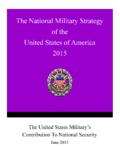
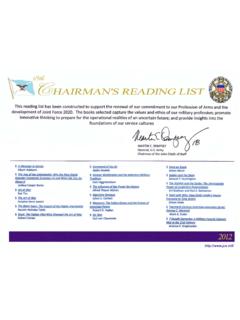

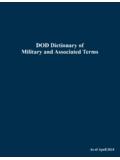
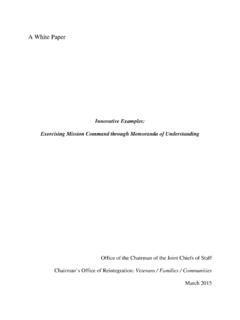
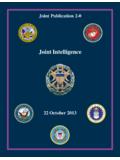
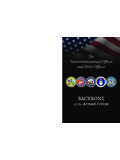

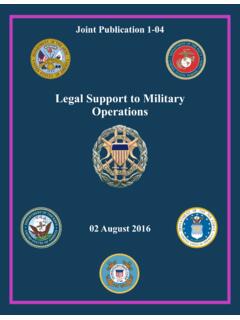
![Academic Calendar 21-22-Revised[4]](/cache/preview/7/f/7/6/d/7/1/5/thumb-7f76d715407cec05510b8ae226f064e4.jpg)
